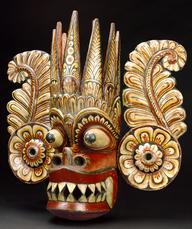


Framed display case containing modern copies of the nine 'Ancient Needles' of acupuncture, modern variations of which are still in use, from the surgery of a British practitioner c.1996, manufactured in Japan, 1980-1990.
The origins of the nine ancient needles of acupuncture are attributed to the Southern coast of China. In Traditional Chinese Medicine (TCM), acupuncture needles are pressed against or inserted into certain points on the skin. This unblocks the flow through the body of a life force known as qi (chi). TCM practitioners believe qi is essential to wellbeing. Early needles were made of stone chiselled into a fine point. Bamboo, iron, gold, silver and alloys have all been used too. The choice of needle depends on the patient’s needs, the amount of stimulation required and the technique used. This display recreates the nine ancient needle types at the origins of TCM. Modern variations of these needles are still used.
Details
- Category:
- Asian Medicine
- Object Number:
- 2002-433
- Measurements:
-
overall: 515 mm x 412 mm x 44 mm, 2.46 kg
- type:
- acupuncture needle
- credit:
- Kelley, R.




